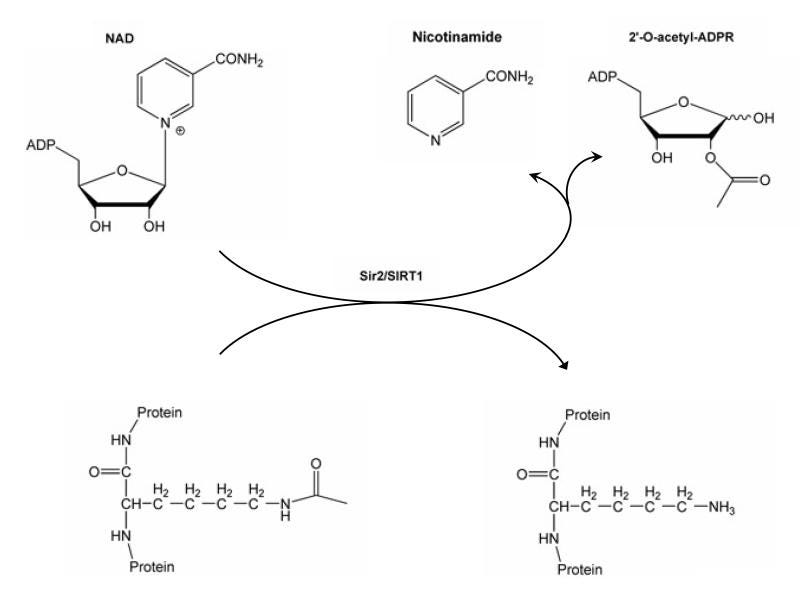SIRT1 Regulation: A Key to Healthy Aging and Longevity Insights
Written on
The Role of SIRT1 in Healthy Aging
Recent reviews indicate that managing SIRT1 levels could mitigate complications associated with aging and obesity.

Sirtuins: Proteins with Potential
Sirtuins are a family of proteins that play various roles, including regulating transcription, apoptosis, inflammation, stress response, and energy metabolism. Their potential to promote longevity has sparked significant interest among researchers.
Mammals, including humans, produce seven distinct sirtuins (SIRT1 through SIRT7), with several being investigated for their contributions to healthy aging. SIRT1, in particular, has garnered attention due to studies in laboratory mice suggesting that higher SIRT1 levels can protect against obesity-related conditions like metabolic syndrome, type II diabetes, and fatty liver disease. These mice also exhibit healthier aging, showing reduced risks for osteoporosis, certain cancers, and mitochondrial dysfunction, often living 15-20% longer depending on the strain.
SIRT1 is an enzyme that deacetylates transcription factors, meaning it removes acetyl groups from proteins that influence gene expression. This action impacts the functions of these transcription factors and, in turn, the expression of various genes. SIRT1's contribution to longevity may partly stem from its ability to inhibit the inflammatory protein NF-κB, a transcription factor that governs genes related to inflammation. Thus, SIRT1 acts as a significant suppressor of inflammation. However, the relationship is complex, as both SIRT1 and NF-κB interact in various ways.
While there is limited data on the direct correlation between sirtuins and longevity in humans, ongoing research aims to identify or develop sirtuin modulators, with some compounds currently undergoing clinical trials. Most research focuses on activating sirtuins, although in certain conditions, such as Huntington's disease, inhibiting SIRT1 is also being explored.
Regulating SIRT1 Activity
How can we enhance SIRT1 activity within our bodies? A recent review examines the evidence, though it's essential to note that much of this research is based on animal studies, which may not always translate to human physiology. It's also worth mentioning that simply increasing the expression of the SIRT1 gene doesn't always equate to heightened SIRT1 protein activity. For instance, some studies suggest that age-related diseases or hormonal imbalances can lead to increased SIRT1 expression alongside decreased activity.
Fasting: A Potential Stimulus for SIRT1
SIRT1 was the first sirtuin gene identified (initially discovered in yeast as Sir2). Researchers hypothesized that this protein might mediate the lifespan-extending benefits of calorie restriction. Laboratory studies have shown that SIRT1 expression increases during fasting and decreases with high-glucose or high-fat diets. However, it's important to remember that while fasting may slightly elevate SIRT1 expression in humans, it does not necessarily enhance its overall activity.
Exercise: A Beneficial Approach
Physical activity appears to effectively boost both SIRT1 expression and activity, supported by studies in both rats and humans. Activities like treadmill running and cycling have been shown to increase levels of SIRT1 (and SIRT3). Nonetheless, not all research supports these findings, indicating that further investigation is needed to determine the most effective forms of exercise. Interestingly, resistance training does not seem to impact SIRT1 levels or activity.
Dietary Influences on SIRT1
Certain natural food components may positively affect SIRT1 levels and activation. However, establishing a direct link between these compounds and improved human health remains challenging due to their diverse effects. Some promising dietary components include:
- Resveratrol (found in grapes, blueberries, raspberries, and peanuts)
- Quercetin (present in capers, buckwheat seeds, red onions, and kale)
- Berberine (derived from goldenseal, barberry, and Oregon grape)
- Curcumin (found in turmeric, but with limited clinical data on SIRT activation; combining it with black pepper may enhance its bioavailability)
- Fisetin (found in strawberries, apples, and onions)
The authors caution that molecular studies from in vitro and animal models often yield inconsistent results when compared to clinical trial data. Key factors such as dosage, timing, and bioavailability require further investigation.
Pharmaceutical Advances in SIRT1 Modulation
The interest in SIRT1's role in healthy aging and various diseases has led to the development of compounds aimed at modulating its expression and activity. Some of these compounds are derivatives of resveratrol (like resVida and Longevinex®), while others originate from different chemical structures (e.g., SRT1720, SRT2104).

Highlighting the Importance of NAD+
SIRT1 is a NAD+-dependent enzyme, meaning it requires NAD+ to function. This coenzyme is present in all human cells, and SIRT1 utilizes it as a substrate for removing acetyl groups from target proteins. Increasing NAD+ levels can therefore enhance SIRT1 activity. Many of the previously mentioned compounds, including resveratrol, likely modulate SIRT1 primarily by influencing NAD+ levels instead of directly affecting SIRT1.
There are two primary strategies to elevate NAD+ levels: introducing NAD+ precursors that our bodies can use to produce more NAD+ (such as NR, NMN, and vitamin B3) or inhibiting other pathways that consume NAD+, allowing more NAD+ to be available for SIRT1 activation (through PARP and CD38 inhibitors). However, evidence supporting some of these methods is still limited, so it's crucial to conduct thorough research and consult professionals before taking any supplements.
Understanding SIRT1 Regulation
In conclusion, managing SIRT1 levels presents a promising avenue for promoting healthy aging and combating age-related diseases. Continued research into the various methods of regulating SIRT1, including diet, exercise, and pharmaceuticals, will be essential in unlocking its full potential.
The first video on this topic provides insights into why SIRT1 levels decline with aging and cellular senescence, offering further context to its role in longevity.
The second video explores three indicators of Sirtuin deficiency and highlights why these proteins are crucial for health, making it a valuable resource for understanding SIRT1's significance.